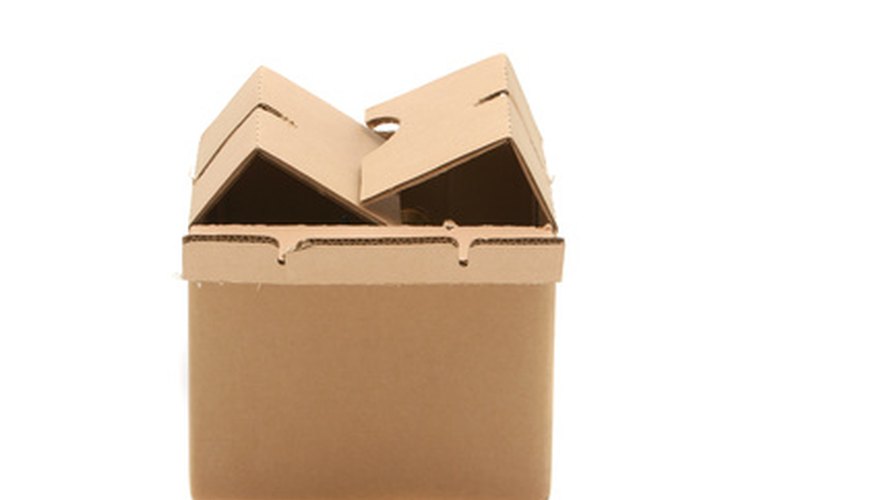Nearly everything we purchase at a grocery store, department store, convenience store or hardware store is packaged in some form of cardboard. We encounter a variety of types of cardboard every day. Some of it is recyclable and some isn't.
For effective recycling, it's important to understand the differences between the types and the pros and cons of recycling them. The types of cardboard most consumers use are corrugated, wax-covered and boxboard or chipboard.
Corrugated
Corrugated cardboard is used to make moving boxes and strong, sturdy packing boxes. It has an inner layer of wavy cardboard that gives the box stability. This type of cardboard is plentiful and easily recycled.
The advantages of recycling corrugated cardboard are many. It can be sent to the recycling mill with labels, staples and tape attached. The mills have machinery that remove these items. It can also be recycled seven times before the length of the fibres degrades into sludge waste.
- Corrugated cardboard is used to make moving boxes and strong, sturdy packing boxes.
- It can also be recycled seven times before the length of the fibres degrades into sludge waste.
Waxed Cardboard
This type of cardboard is used when refrigeration is required or the cardboard will be out in the elements. Waxed cardboard includes boxes that are used for storing and shipping vegetables and meats for grocery stores. This can also include packaging for frozen and refrigerated foods. Milk and juice cartons are made from waxed cardboard as well.
- This type of cardboard is used when refrigeration is required or the cardboard will be out in the elements.
- This can also include packaging for frozen and refrigerated foods.
Waxed cardboard is usually not recyclable and should be thrown away. The fact that it cannot be recycled is a big drawback to this type of cardboard.
Boxboard or Chipboard
Much of what is brought home from the store is boxboard or chipboard. This cardboard is used for everything that doesn't require the strength of corrugated cardboard or the wax used for refrigeration. Cereal boxes, packaged food boxes, labels and packaging for common household items, shoe boxes and small shipping envelopes are all examples of boxboard.
Most boxboard is recyclable. The exception is the boxboard used for frozen foods and beer and soda boxes. Beer and soda boxes are made of carrier stock cartons and are often waxed for refrigeration. Many of these types pf packages are made from recycled paper before they are waxed.
- Much of what is brought home from the store is boxboard or chipboard.
- The exception is the boxboard used for frozen foods and beer and soda boxes.
